MidTerm Presentations¶
Feathers are known as one of the most impressive biological structures found in animals. These evolutionary appendages composed of tiny keratin structures aid birds in flight, protection, insulation, and communication.
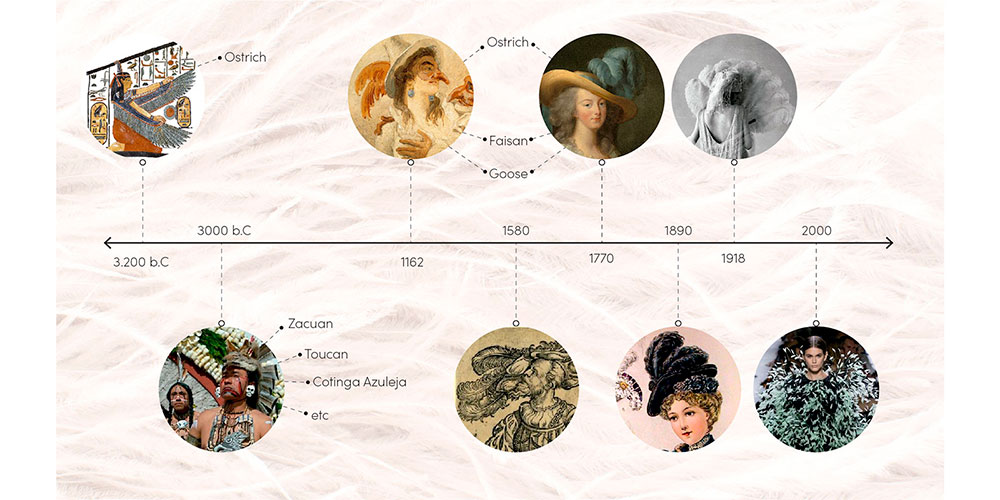
Beyond aviary animals, the dynamic and varied beauty of feathers is what has captivated the world, with plumage being used as a fashion adornment for millennia.
For centuries, feathers have been part of history as a symbol of loyalty, high honor, seen as a garment indicating social importance, and finally as an item symbolizing femininity.
Current State of Art¶
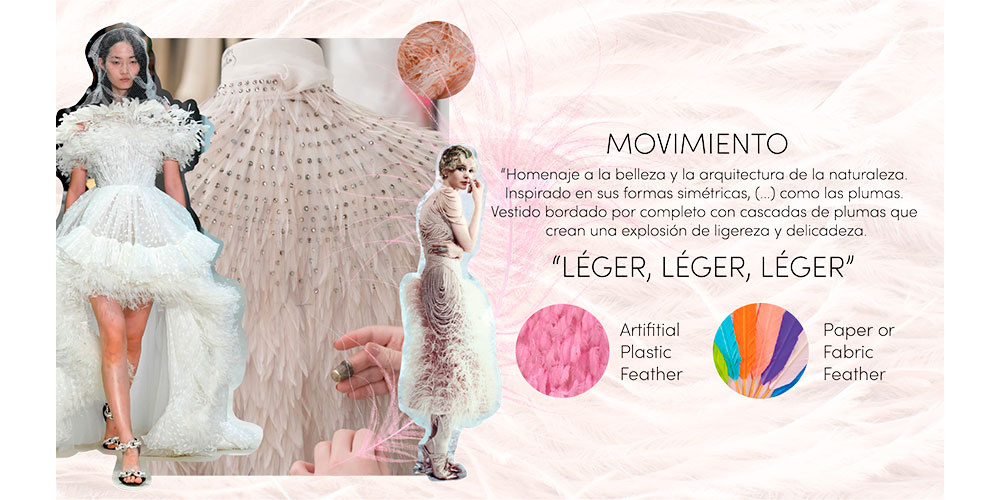
For the moment I'm focused on finding an alternative for the ornamental Feathers, specially in the haute couture business, that in order to find the perfect materials for their garments, most of them use animal feathers.
For the designers the feather has to be perfect, because most of these garments are a tribute to femininity, so the material must communicate symmetry, beauty, lightness and delicacy. But, at what cost?
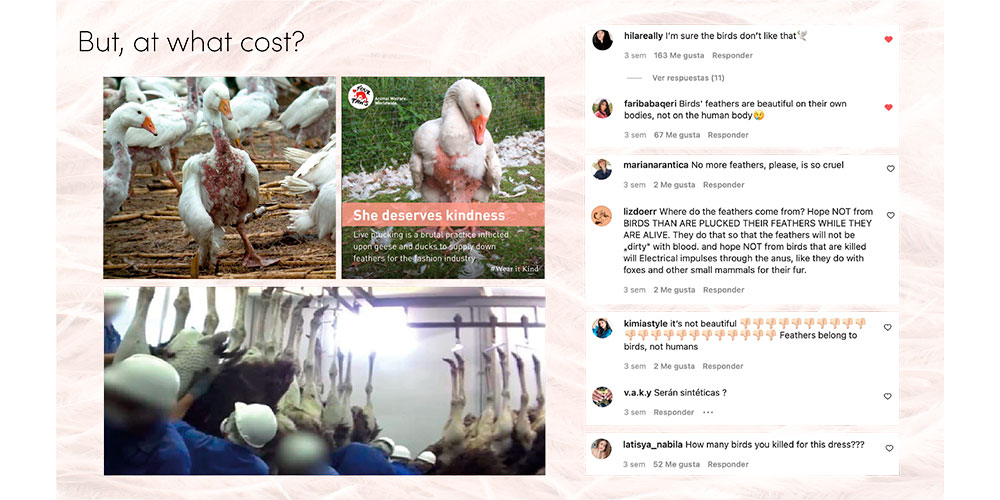
Most of the brands use animal feathers as the main material of these garments, for obvious reasons there’s always wonderful comments about the beauty of the work, but little by little there’s people that start to get more conscious about the problem behind this kind of fashion.
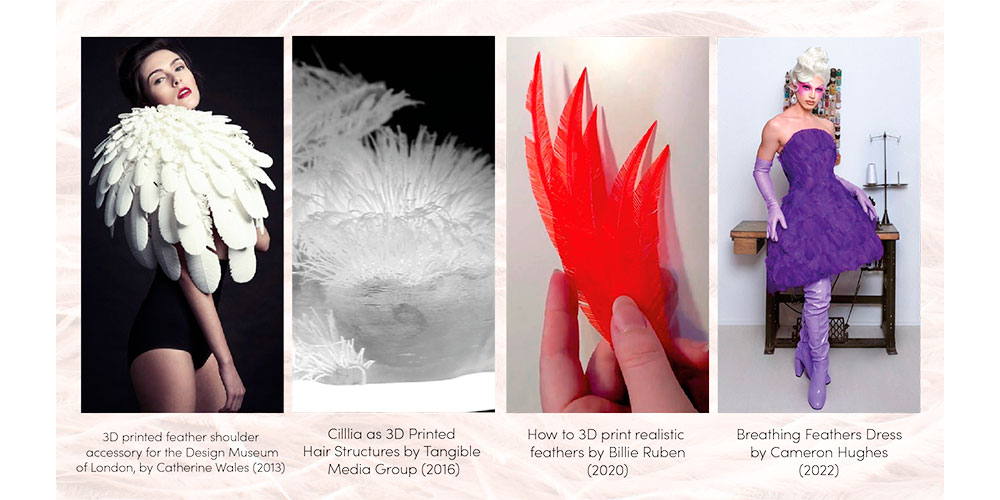
Here’s some projects that have served me as reference during the final project process, where we can go from rigid shoulder accessories, to a live feather dress.
WHAT - WHY - WHO - HOW ?¶

The statement of my final project is to find a way to make a non animal and sustainable feather, to improve in new ways the experience of using feathers.
But why? Because over the years, there's a lot of people asking the same questions or making the same comments
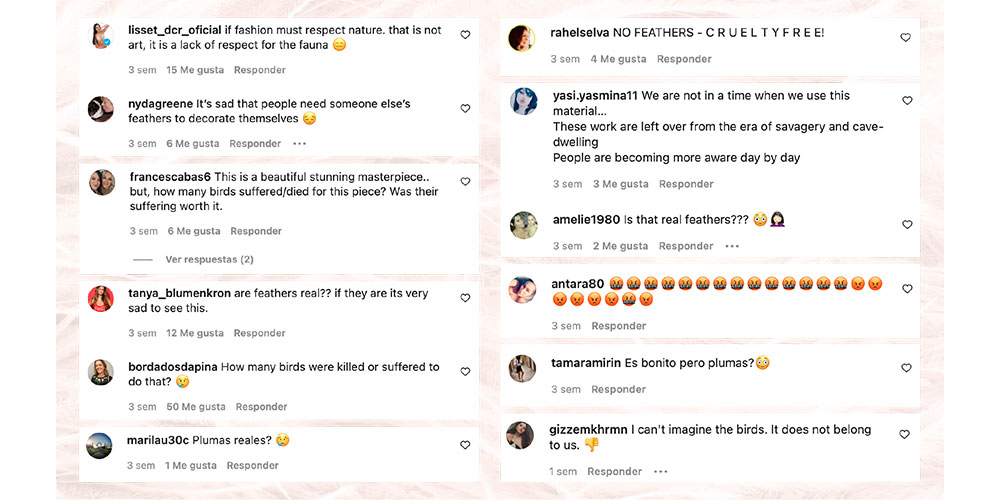
and with all of this, i can't help wondering...

So, this is a project for the people who want an alternative for the animal or artificial feathers that we have in today's market.

Experiments¶
Mycelium Feather¶
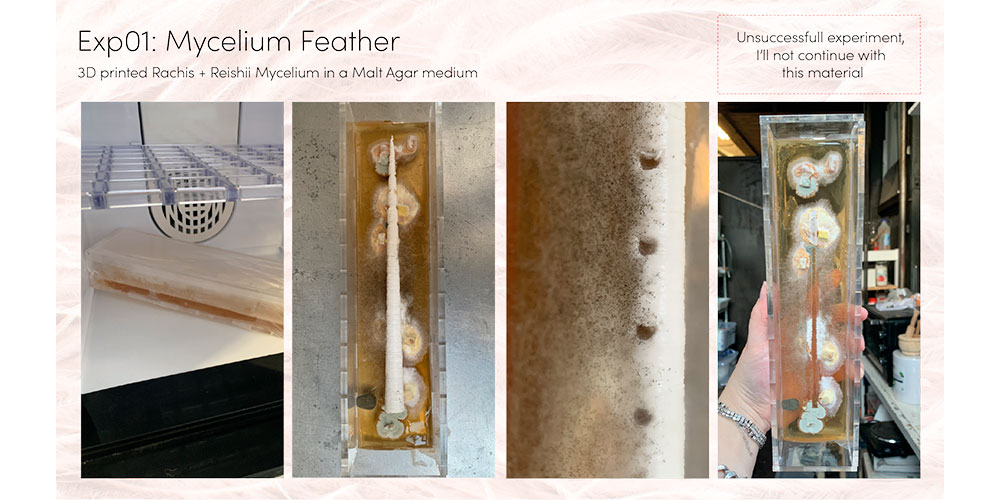
The first experimentation that i made was with mycelium, trying to make it grow between 3D printing rachis in a malt-agar medium. I didn’t continue with this type of experimentation because is a very delicate process, that needs a lot of time to grow and have results that can be positive or not.
Pampas Grass Feather¶
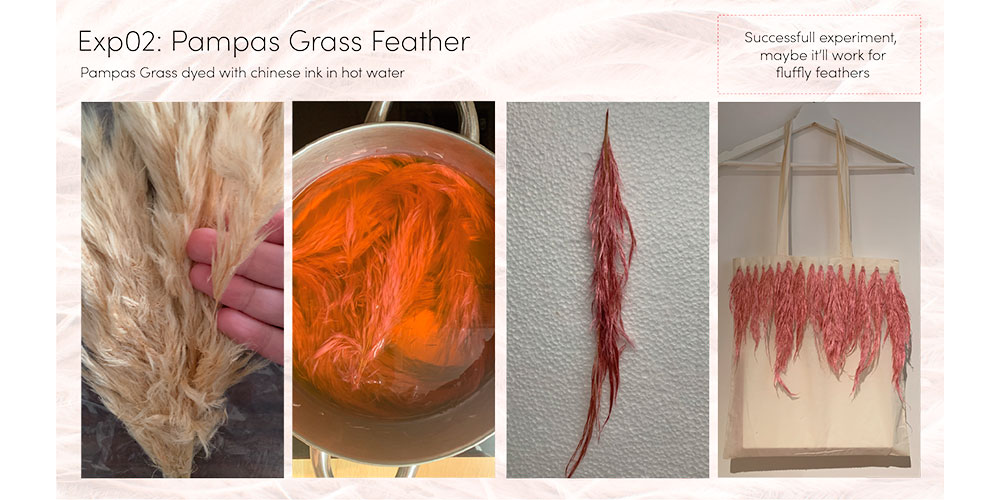
The second one was trying to emulate a feather with pampas grass, that i dye with ink and seal with hair spray.
3D Printed Feather¶
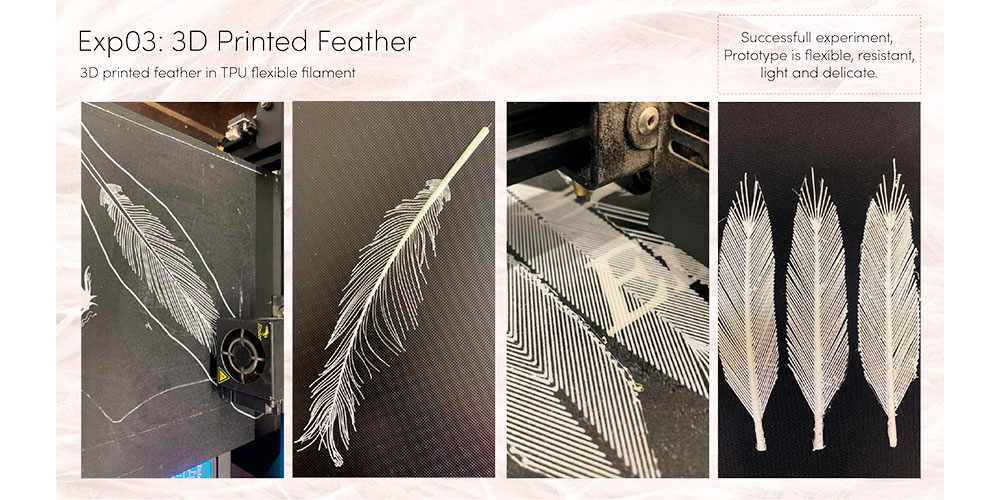
The third experiment was to 3D printing feathers with flexible TPU filament, this one is my favorite because it gives me great results. The prototypes are flexible, resistant, light and delicate.
Cellulose Based Filament¶

My last experiment was about making a biomaterial filament based on cellulose, glycerine, collagen and water. Then I extruded with a syringe and had my spaghettis as a result. I tried to make it with a thinner extrusor but the material is too dense to pass through.
3D Printed Feathers¶
After all of this, these are my future experiments. i would like to develop 3D printed Feathers with different materials, trying to be as sustainable as possible using an improved biomaterials.
- Biomaterial based on Cellulose
- Recicled Flexible TPU
- Biocompostable and flexible based on Cornstarch
- Based on recicled Tires
- Magnetic PLA
- Edible material based on Sugar

All in the way to create new experiences based on FEATHERS like edible candy feathers, conductive feathers that can give life to a garment, magnetic ones that can help in assembly and movement process, etc.
Final Presentation¶
Thanks for reading! :)